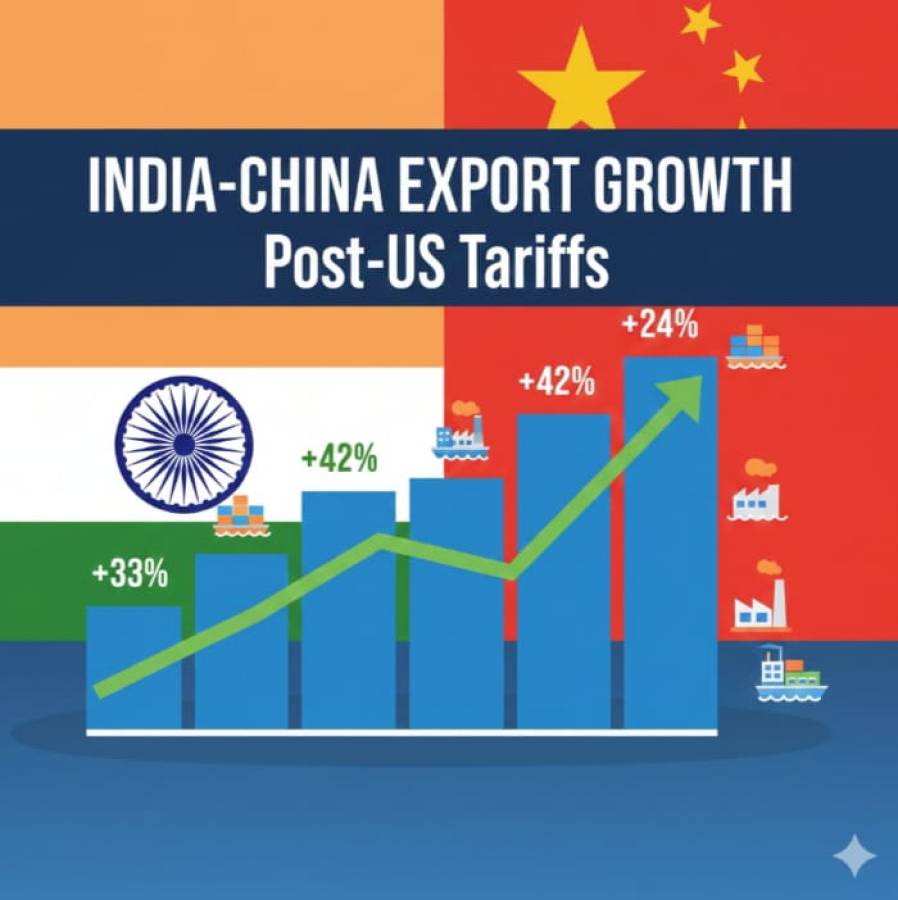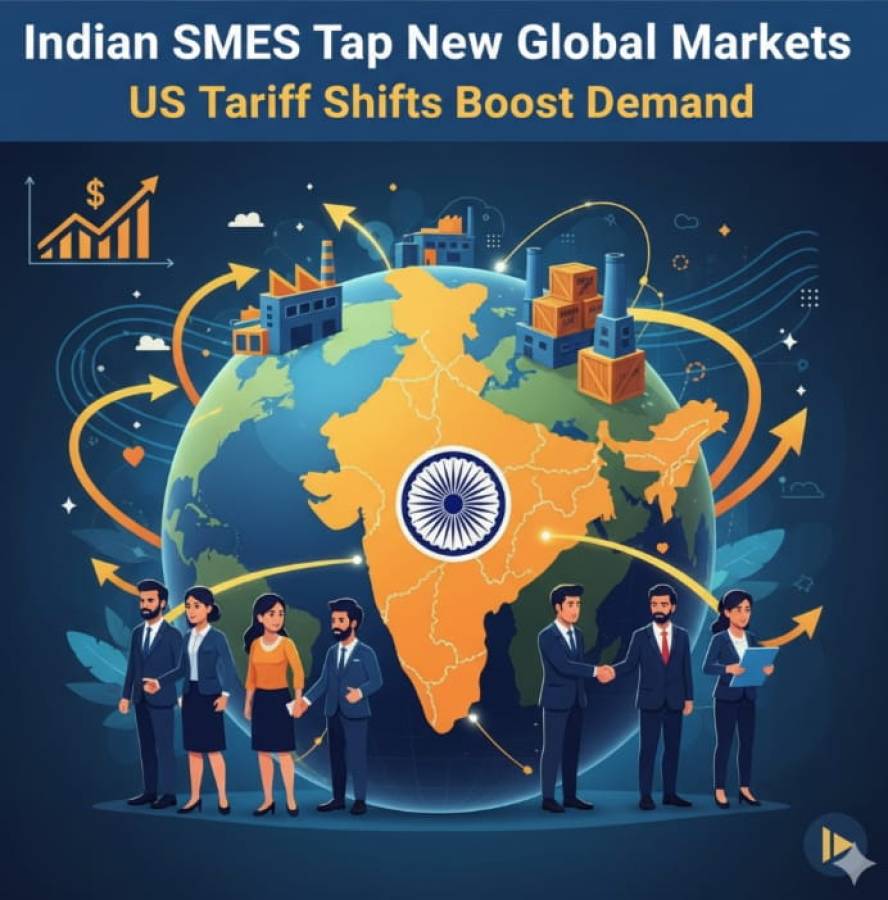
The recent rise in United States tariffs on Indian goods has created a complex yet revealing shift in the flow of global trade. At first glance, higher tariffs from one of India's largest export destinations would appear to deliver an unavoidable setback. Instead, what has emerged is a striking example of how global markets constantly readjust to pressure points. The imposition of these duties has triggered a significant redirection of Indian export activity, particularly toward China, and this has opened a new chapter in India’s trade landscape. Rather than slowing down, Indian exporters have demonstrated adaptability and strategic thinking by seeking out markets where demand remains strong and barriers are lower. China, with its immense manufacturing base and ongoing need for raw materials and intermediate goods, has become a major destination absorbing the pressure created by US trade restrictions. This redirection highlights not only the resilience of Indian exporters but also the fluid nature of global trade, where geopolitical frictions can unexpectedly strengthen commercial links elsewhere. It also reveals the underlying strengths of several Indian industries that have continued to expand even as traditional export pathways face obstacles. The trend shows how global trade tensions often reshape rather than reduce the volume of economic exchange, and India’s rising shipments to China stand as a clear example of this evolving reality.
Sustained Double Digit Growth in Shipments
Following the full enforcement of the US tariffs, Indian exports to China have not only remained stable but have grown at an impressive rate. The numbers reflect a pattern of strong and consistent expansion, with several months showing double digit increases. Indian shipments to China rose by 33.33 percent in September and climbed further to 42.35 percent in October, precisely during the peak impact period of the US restrictions.
Over the larger April to October period, the momentum continues to tell a compelling story. India's merchandise exports to China increased by nearly 24.66 percent, reaching 10.03 billion dollars, compared to 8.04 billion dollars during the same months last year. This jump signals a rapid adjustment to global trade conditions and demonstrates the ability of Indian exporters to redirect goods efficiently toward receptive markets.
Sectoral Drivers of the Export Surge
Several sectors have played a crucial role in this expansion, reflecting both China’s evolving import needs and India’s growing production capabilities.
Petroleum Products: This category is one of the strongest contributors to the surge. Exports more than doubled, driven by China’s high demand for industrial fuel and refined products. This also highlights India's growing role in supplying energy inputs to major global manufacturing hubs.
Telecom Instruments: This sector has recorded extraordinary growth, indicating India’s rising relevance in the global electronics value chain. Indian firms are increasingly supplying components that support China’s large electronics industry.
Marine Products: Once vulnerable due to US tariffs, the sector has found stability through growing demand in China. Strong export numbers signal market recovery and successful redirection of supply.
Trade Diversion and Market Adaptation
The growth in exports to China is widely viewed as a classic case of trade diversion. With higher US tariffs reducing India's competitiveness in that market, exporters have turned to regions where demand remains strong and access is less restricted. China has become a natural alternative due to its industrial scale and import appetite.
The consistent rise in shipments to China, even as overall Indian merchandise exports show only marginal growth, demonstrates how vital the Chinese market has become in balancing the impact of American trade measures. This pattern reflects a broader truth about global trade. When one corridor narrows, exporters who respond quickly often discover new opportunities. India’s exporters have shown exactly that level of awareness and resilience, navigating uncertainty with strategic shifts that sustain growth even in challenging times.




















